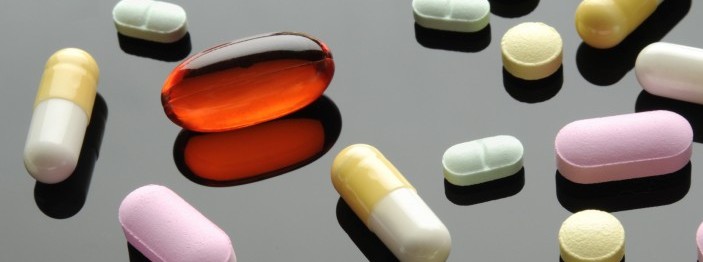Oral therapies: an overview of new meds
One oral medication (Gilenya) is now available to treat relapsing-remitting and several others are expected to become available within the next year. Oral drugs are at least as effective as older drugs, more convenient and easier to take, which may mean that we’re seeing the beginning of the end of the injectable drug era.
The following summarizes some of the key data on oral MS drugs. Some results have been presented at the 2011 ECTRIMS meeting (European Committee for Treatment and Research in MS), the largest European MS meeting. [Note that ARR (annualized relapse rate) is the relapse rate divided by the number of years of treatment (e.g. 1 relapse over a 2-year period, ARR=0.5).
Fingolimod (brand name Gilenya): Reduces the overactive immune response seen in MS by sequestering activated T cells in the lymph nodes. This prevents these immune cells from invading the central nervous system (CNS) and causing inflammation and damage.
Dosing: Taken once a day.
Phase III studies: FREEDOMS (Kappos and colleagues. N Engl J Med 2010;362:387-401),
TRANSFORMS (Cohen and colleagues. N Engl J Med 2010;362:402-415), and FREEDOMS II (Calabresi P. AAN 2012; abstract ES15).
Results: ARR was 54% lower with fingolimod compared to placebo in the FREEDOMS study, and 52% lower than Avonex in the TRANSFORMS study. ARR was 0.16-0.18 with fingolimod (about 1 relapse every 5 years) compared to 0.40 with placebo and 0.33 with placebo (about 1 relapse every 2-3 years).
Possible side effects: Low heart rate, risk of infections, changes in vision, high blood pressure, back pain, diarrhea. Other side effects can occur.
Teriflunomide (brand name Aubagio): Reduces the number of immune cells entering the CNS.
Dosing: Taken once a day.
Phase III studies: TEMSO (O’Connor and colleagues. N Engl J Med 2011;365:1293-1303), TENERE (not published), TOWER (not published).
Results: ARR was about 31% lower with teriflunomide versus a placebo in TEMSO. ARR was about 0.37 with teriflunomide compared to 0.54 with placebo. In TENERE, teriflunomide was not significantly different than Rebif. ARR was about 0.26 with high-dose teriflunomide and 0.22 with Rebif (about 1 relapse every 5 years). Low-dose teriflunomide was less effective (ARR 0.41). In the TOWER study, ARR was 36% lower with high-dose teriflunomide and 22% lower with low-dose teriflunomide compared to a placebo.
Possible side effects: Nausea, diarrhea, hair loss, back pain. Warning about possible liver injury. Other side effects can occur.
Expected to become commercially available in 2012-2013.
BG-12: Derived from a medication that treats psoriasis, BG-12 is believed to interfere with the genes involved in producing inflammatory chemicals.
Dosing: Taken two or three times a day.
Phase III studies: DEFINE (Gold and colleagues. N Engl J Med 2012;367:1098-1107), CONFIRM (Fox and colleagues. N Engl J Med 2012;367:1087-1097).
Results: ARR reduced 48-53% with BG-12 compared to a placebo in DEFINE. ARR was 0.17 (lower dose) and 0.19 (higher dose) (about 1 relapse every 5 years) compared to 0.36 with placebo. In CONFIRM, ARR was reduced 44-51% with BG-12 and 29% with glatiramer acetate compared to placebo. ARR was 0.22 (lower dose) and 0.20 (higher dose) with BG-12, 0.29 with glatiramer acetate and 0.40 with placebo.
Possible side effects: Flushing, diarrhea, nausea, stomach pain. Other side effects can occur.
Expected to become commercially available in 2012-2013.
Laquinimod: Suppresses immune cell activation and inflammation.
Dosing: Taken once a day.
Phase III studies: ALLEGRO (Comi and colleagues. N Engl J Med 2012;366:1000-1009), BRAVO (Vollmer and colleagues. ECTRIMS 2011; abstract 148).
Results: ARR was reduced 23% with laquinimod compared to a placebo in ALLEGRO. ARR was 0.30 with laquinimod (about 1 relapse every 3 years) versus 0.39 with placebo. In BRAVO, ARR was 17% with laquinimod compared to placebo. ARR was 0.28 with laquinimod and 0.34 with placebo (not significantly different).
Possible side effects: Stomach pain, back pain, cough, diarrhea, urinary tract infection. Other side effects can occur.
Expected to become commercially available in 2012-2013.
| Comparison of oral therapies | |||
|
Drug |
Doses/day |
Relapse rate reduction* |
Possible side effects** |
| Fingolimod (Gilenya) |
1 |
54% |
Low heart rate, risk of infections, changes in vision, high blood pressure, back pain, diarrhea |
| Teriflunomide (Aubagio) |
1 |
31% |
Nausea, diarrhea, hair loss, back pain, liver injury |
| BG-12 |
2 or 3 |
44-53% |
Flushing, diarrhea, nausea, stomach pain |
| Laquinimod |
1 |
17-23% |
Stomach pain, back pain, cough, diarrhea, urinary tract infection |
*compared to a placebo; **other side effects can occur
Share this article
Facebook Twitter pin it! Email
Related Posts
Back





